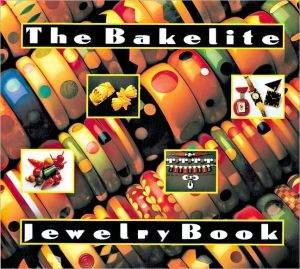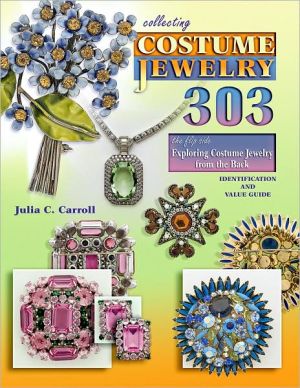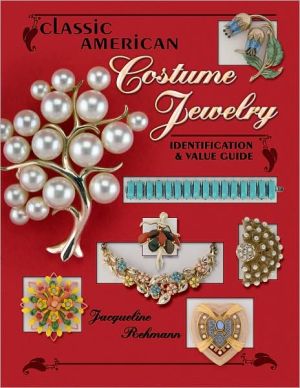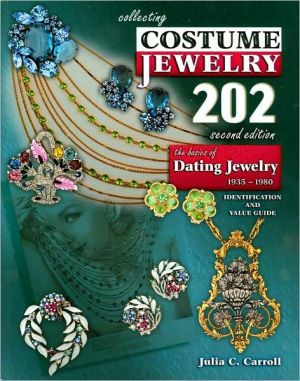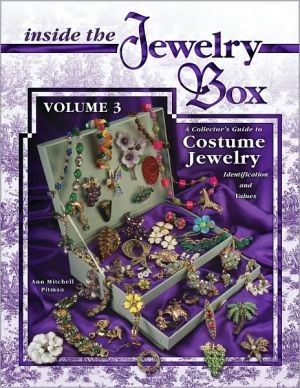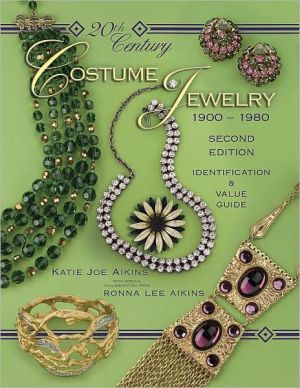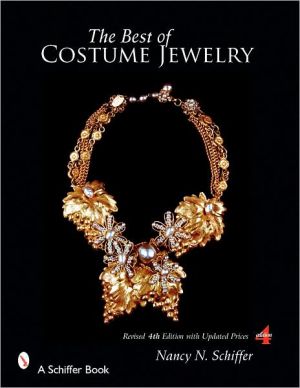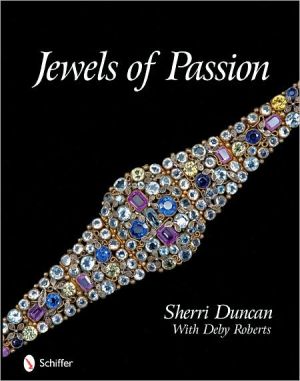The Bakelite Jewelry Book
During recent years, the Bakelite jewelry of the 1930s has become a trendy and popular fashion accessory and much-valued collectible. Emblematic of a unique culture that only could have blossomed between a depression and a world war, this cheeky costume jewelry is beautifully shown here in its amazing range, humor, high style, good-hearted silliness, streamlined chic, and daring inventiveness.\ Bakelite, the first thermosetting plastic, formed the basis for Depression-era fashion trend that...
Search in google:
During recent years, the Bakelite jewelry of the 1930s has become a trendy and popular fashion accessory and much-valued collectible. Emblematic of a unique culture that only could have blossomed between a depression and a world war, this cheeky costume jewelry is beautifully shown here in its amazing range, humor, high style, good-hearted silliness, streamlined chic, and daring inventiveness. Bakelite, the first thermosetting plastic, formed the basis for Depression-era fashion trend that began, spread like wildfire, and died away, all within a few short years--between 1933 and 1941. A generation later, there is an astounding resurgence of interest in Bakelite jewelry. Among fashion trendsetters, there is growing infatuation with these playful and very wearable baubles. Among serious collectors, there is fierce competition for the rare, quality pieces that were made in limited numbers under such evocative brand names as Marblette, Gemstone, Prystal, Agtine, and Catalin. Bakelite seems to be everywhere, and prices are rising. The authors have assembled for this book--from many sources--the greatest array ever seen of Bakelite jewelry. They have also appended a very useful guide to prices. Other Details: 160 illustrations, 150 in full color 156 pages 10 1/4 x 10 1/4" Published 1988
Introduction\ We first became aware of Bakelite jewelry about fifteen years ago, but we had no name for it. There on the cover of an old (April 28, 1941) issue of Life magazine was a black-and-white photo of a pretty model wearing an enormous, red heart brooch. The accompanying article reported that red was the "in" color for spring. But what was the pin made of? And who made it? And why? Nowhere in the entire article was there any reference to the brooch. What could be so unusual now but so absolutely common then as to deserve no mention? It was obviously some sort of plastic, but different from the plastics of today, possessed of a depth and a density, a richness of color, and a glow unlike anything else.\ The plastic, we later found out, was a cast phenolic resin--Bakelite-used in the manufacture of, among other things, Depression-era costume jewelry. Bakelite jewelry inspired a fashion trend that began, spread like wildfire, grew to gigantic proportions, and died away all within a few short years--flourishing little more than a decade, particularly between the years 1933 and 1941. But like many enchanting things of an earlier period, it has re-emerged as a desirable collectible, something to search for, admire, cherish, and wear.\ The purpose of this book is to illustrate the amazing range, the indefatigable humor, the high style, the good-hearted silliness, the streamlined chic, the daring inventiveness, the color, and the form that characterize Bakelite jewelry. It is emblematic of a unique culture that only could have blossomed between a depression and a world war. A sign of the times, Bakelite baubles were a valentine to optimism, a what-the-hell gaiety, a feeling of"making hay while the sun shines." So what if you had no money! Just pin some dime-store cherries on your old blue serge lapel, tilt your felt chapeau, and go get 'em! Like Fiestaware, cocktail shakers, and bridge parties, Bakelite jewelry was indisputably compatible with a national mind-set. And like the popular songs of the thirties that espouse the philosophy of an entire generation, Bakelite jewelry sheds its own light on the tenor of the times. It is definitely a walk on "the sunny side of the street."\ The eighties have witnessed an astounding resurgence of interest in the cast phenolic jewelry of the thirties. For the collectible-buying public, there is a growing infatuation with these gay and very wearable pieces of the period. For the serious collector, there is fierce competition for the rare, quality pieces made in limited numbers. Because of this, Bakelite seems to be everywhere. Each year, the Manhattan Antiques and Collectibles Expo features a staggering array of it. In the south of France, thousands of people flock to the plastic museum of the Centre Culturel Aragon. In the movie Radio Days Woody Allen bedecked his actresses with it. Connoisseur magazine's July 1985 issue devoted the cover and a sumptuous eleven-page spread to it, and in January 1987 the Sunday supplement of London's Daily Mail reported on Patrick Cook's Bakelite Museum Society and his annual "Phenolic Picnic"! On April 24, 1988, record prices were set at Sotheby's New York for the extensive Bakelite collection in the Andy Warhol estate.\ In short, Bakelite jewelry is alive and holding up very well for its fifty-odd years. Join us in celebrating a distinctly individual, freewheeling, and high-spirited style of expression.
A Word About Bakelite Acknowledgments Introduction Early Plastics -- The Father of Plastics Fashion History -- Diana Vreeland Geometric Jewelry -- Jewelry and Powder Boxes Carved Jewelry -- Hail Britannia Clear Carved Jewelry -- Memoirs of a Bakelite Jewelry Lover Circa 1936 Figural Jewelry -- Martha Sleeper -- Button Up Your Overcoat Collecting Bakelite Jewelry A Price Guide to Bakelite Jewelry Bibliography About the Authors Index
